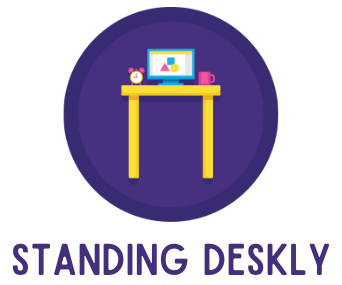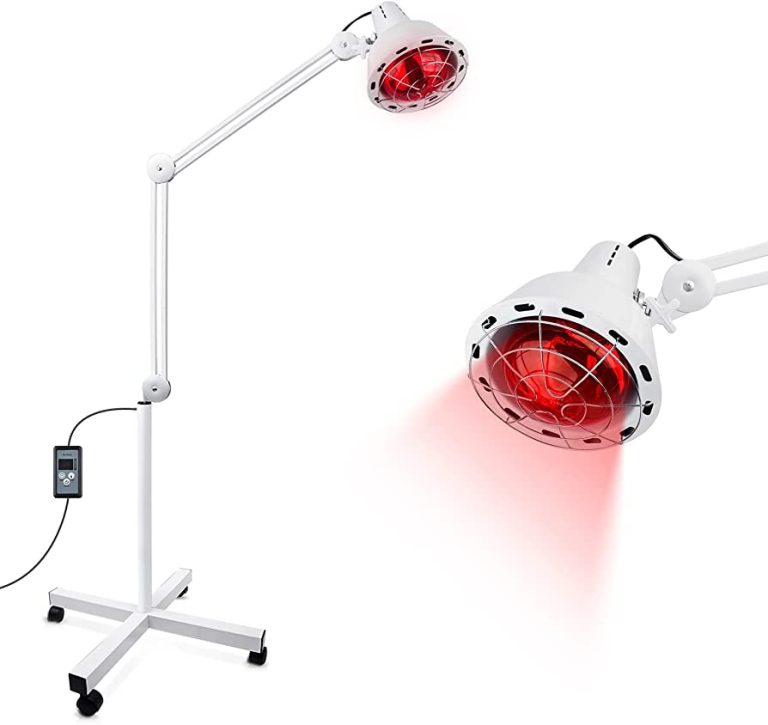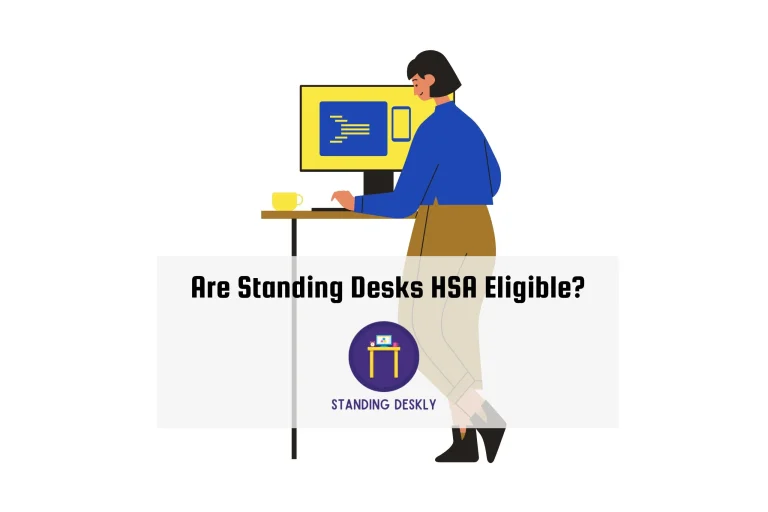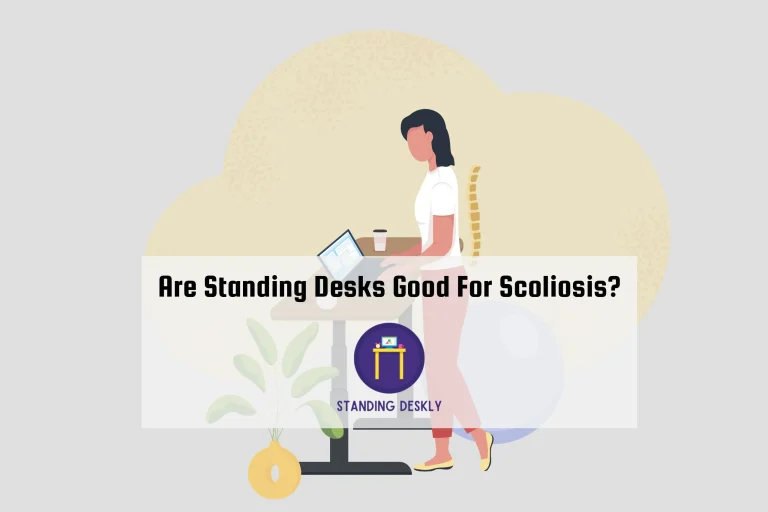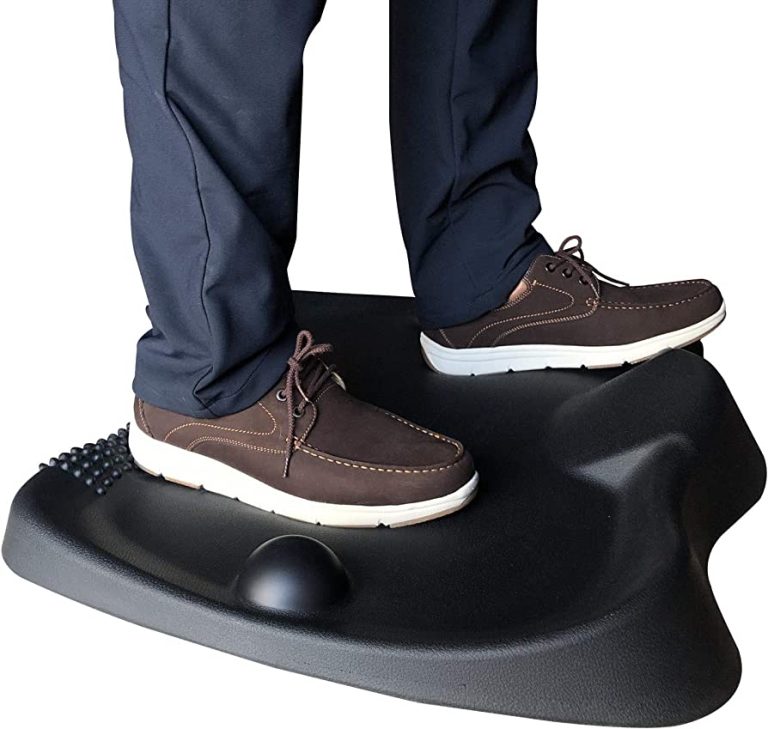Boost Your Mood: Psychological Benefits of a Standing Desk
Using a standing desk has numerous psychological benefits, including improved focus and productivity. Standing desks can improve posture, reduce back pain and boost energy levels, leading to better overall well-being and mental clarity.
In today’s modern world, people spend countless hours seated in front of their computers. While this may seem like the only way to get work done, it can take a toll on a person’s mental and physical health. Fortunately, using a standing desk can offer numerous psychological benefits, including greater focus and productivity levels.
When using a standing desk, individuals can improve their posture, reduce back pain, and increase energy levels, leading to an overall better sense of well-being. In addition, the physical act of standing can improve circulation and blood flow, providing numerous mental and physical benefits to those who take advantage of it.
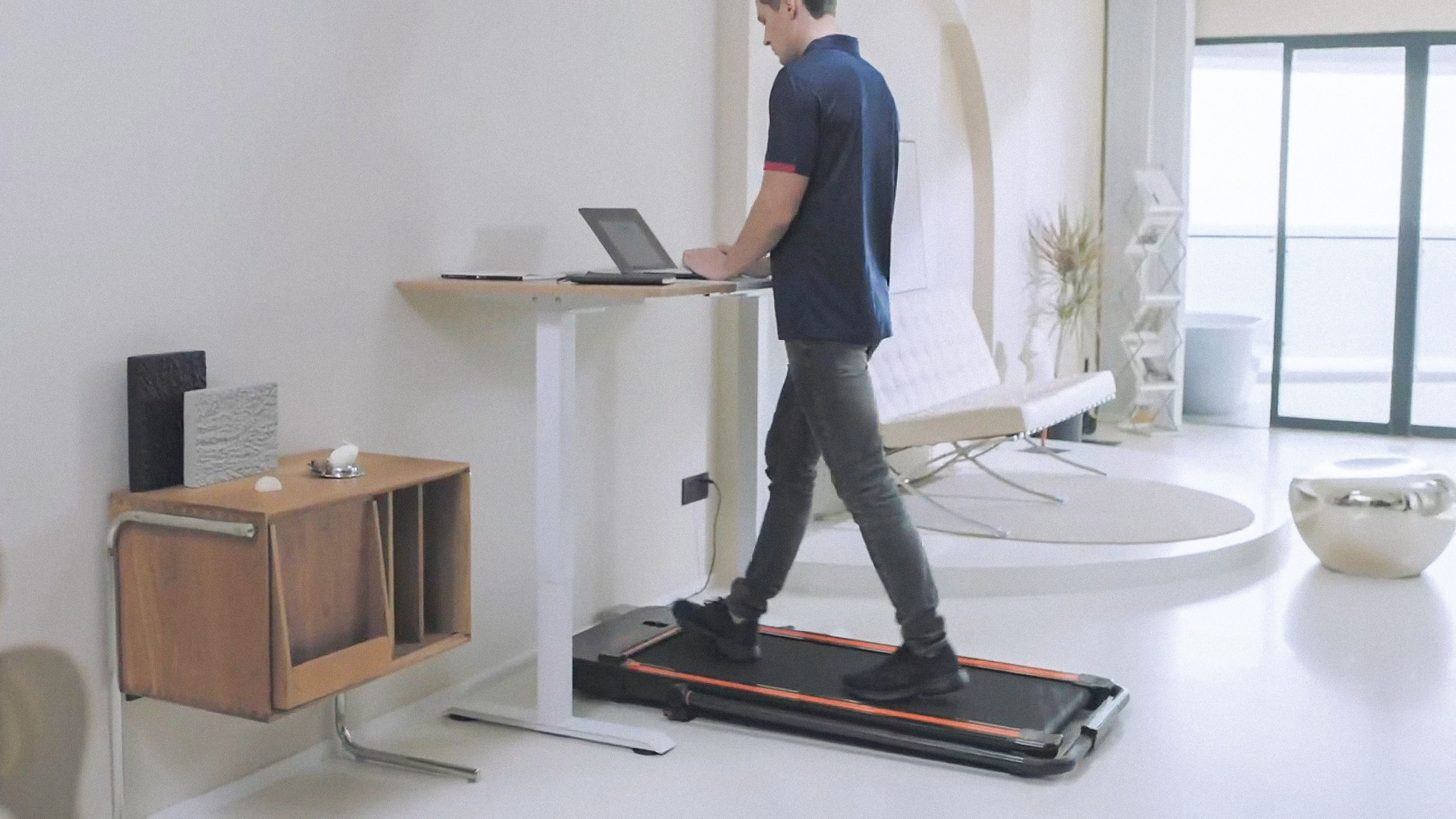
Credit: www.runnersworld.com
Improved Mental Health
How A Standing Desk Can Help Reduce Anxiety
Anxiety is a common mental health issue that can affect anyone. It causes feelings of fear, worry, and nervousness and can interfere with daily activities. Luckily, using a standing desk can help reduce anxiety levels in the following ways:
- Standing desks encourage movement, which increases the production of endorphins, the body’s natural mood boosters.
- The increased blood flow from standing helps keep the brain alert and focused.
- Standing desks prompt more natural and improved breathing, which can calm the body and reduce anxiety levels.
- The posture that standing desks encourage can aid in opening up the body, which can help reduce feelings of tension and anxiety.
Fighting Depression With A Standing Desk
Depression is a serious mental health condition that affects individuals differently. It causes a persistent feeling of sadness, hopelessness, and loss of interest in everyday activities. However, using a standing desk can help fight depression with the following benefits:
- Standing desks promote physical activity and elevate mood by stimulating the release of endorphins in the body.
- The increased blood flow caused by standing can help improve overall cognitive function, reducing the brain fog and lack of focus that often accompany depression.
- Studies show that a sedentary lifestyle can worsen depressive symptoms, making standing desks an effective tool for encouraging movement throughout the day.
Increased Focus And Productivity To Reduce Stress
Stress can accumulate in the body, resulting in physical and psychological problems. Stress and work go hand in hand. However, using a standing desk can help increase focus, productivity, and relieve stress in the following ways:
- Standing desks keep the body in an active, alert state, improving focus and productivity levels.
- The movement encourages a more active and engaged posture, which can help reduce feelings of lethargy and increase productivity.
- Standing also encourages deep breathing and improves oxygenation, leading to lower stress levels.
Relevant studies/examples highlighting the link between standing desks and mental health:
- A study conducted by the texas a&m university found that standing desk users reported a 32% improvement in their mental focus and concentration levels.
- Another study published by the international journal of environmental research and public health found that using a standing desk for just one month can lead to improved mood and reduced anxiety levels.
Overall, using a standing desk is an effective way to improve your mental health, boost productivity, and reduce stress levels.
Enhanced Physical Health
Standing desks have become popular in recent years, particularly among those interested in improving their physical health. Research has shown that standing desks can have numerous benefits for our physical and mental well-being. In this blog post, we’ll explore the psychological benefits of using a standing desk, with a focus on its effect on our physical health.
Boosting Self-Esteem Through Better Posture
One of the primary benefits of using a standing desk is that it can help improve your posture. When you sit for long periods, your spine can become misaligned, causing discomfort and pain. Standing desks can help you maintain an upright posture, which can not only reduce discomfort but also boost self-esteem and confidence.
Good posture gives you a sense of control and power, making you feel more assertive and capable in your work.
Additionally, proper posture can also have a positive impact on your cognitive function. When you maintain an upright posture, you improve blood flow to your brain, which can boost your focus, alertness and productivity.
How A Standing Desk Can Encourage Weight Loss
Another significant benefit of using a standing desk is that it can aid in weight loss. Standing burns more calories than sitting, which can help you shed excess weight. Research has shown that using a standing desk can burn an extra 170 calories per day, equivalent to running for 30 minutes.
Standing also engages your core muscles, which can help strengthen and tone your stomach muscles and improve your overall fitness levels. Incorporating a standing desk into your daily routine can be an excellent way to boost your activity level and improve your physical health.
Stronger Cardiovascular System Through Standing
Standing desks can also help improve your cardiovascular health. Sitting for long periods can contribute to poor circulation, leading to an increased risk of heart disease, stroke, and other health problems. Standing encourages blood flow and helps prevent the build-up of fatty deposits in your arteries, reducing your risk of heart disease.
Using a standing desk can also help regulate your blood pressure levels. Standing engages your leg muscles, which helps push blood back to your heart and prevents blood from pooling in your lower legs. Maintaining good blood flow can help ensure that your body is supplied with the oxygen and nutrients it needs to function optimally.
Better Blood Flow And Oxygen Circulation For Increased Energy
Finally, using a standing desk can help improve your energy levels. Standing engages your leg muscles and encourages blood flow, which can help increase oxygen levels in your body. Higher oxygen levels can help reduce feelings of fatigue and boost your energy levels, leaving you feeling more alert and productive throughout the day.
Incorporating a standing desk into your daily routine can have numerous psychological and physical benefits. By promoting good posture, aiding weight loss, strengthening your cardiovascular system, and improving blood flow and oxygen circulation, standing desks can help you improve your overall physical and mental well-being.
Benefits For Creative Work
Improved Creativity And Innovation With A Standing Desk
While it may not be obvious, physical factors such as posture, blood flow, and energy levels have a significant impact on creativity. When sitting for extended periods, it’s easy to get distracted, feel lethargic, and lack inspiration. A standing desk, on the other hand, offers a different experience.
It helps to reduce fatigue and promotes a more active state of mind. A study by the texas a&m university found that standing desks increased employees’ creativity by 45 percent.
- Standing desks encourage better posture, which promotes better oxygen flow to the brain, helping speakers to think more critically and creatively.
- Standing at a desk may open up new possibilities for posture and physical movement, which, in turn, helps people think in innovative ways.
- Standing desks promote a sense of alertness and mental clarity, making it easier for team members to think critically, problem-solve and find new approaches to their work.
How A Standing Desk Is Ideal For Artistic Work
Standing desks are a game-changer when it comes to creative work. Artists require clear thinking, focus and imagination when creating their work. Standing desks help them maintain productive visual creativity that can lead to successful artwork.
- Standing desks help combat physical exhaustion, keeping the artist more alert and invested in their work.
- The standing position places the artist’s body in the right posture to maintain an unbroken line of vision, which is essential for drawing and painting.
- They offer the necessary freedom to move, which helps the artist maintain a steady hand and avoid arm strain, which is vital during painting and drawing.
Boosting Cognitive Performance For Creative Industries
With constantly evolving market trends and increasing competition across many sectors, productivity and performance are crucial for success. Standing desks can help boost cognitive performance, particularly in creative industries.
- Standing desks help to reduce the lethargy that comes from prolonged sedentariness, leading to more energy and improved concentration.
- The physical movement offered by standing desks can lead to enhanced focus, which helps team members zero in on their work and become more productive.
- With more energy and focus, team members can use their time more efficiently, become more productive and bring new and innovative ideas to the table.
Examples Of Successful Creatives Benefiting From A Standing Desk
Many successful creative industry leaders swear by standing desks, and their stories can inspire others in the industry to adopt this new work approach. Some examples are:
- Ernest hemingway: One of america’s greatest writers, the pulitzer prize winner and his typewriter would stand on shelves.
- Leonardo da vinci: The famous artist was known to work on his paintings while standing, making it clear that he believed in the merit of active work.
- Thomas jefferson: The former u.s. president used a standing desk to write portions of the declaration of independence.
Standing desks are ideal for creative work, particularly in the creative industries. Standing can help promote alertness, cognitive focus, and physical alertness, leading to better creativity, greater productivity, and improved performance. With the increasing number of studies available, businesses and individuals across the world should consider incorporating this healthy work practice.
Greater Social Engagement
How A Standing Desk Can Enhance Social Interaction In The Workplace
Incorporating a standing desk into your workspace can have a range of benefits. One that is often overlooked is the psychological impact on social interaction. Here are some ways that a standing desk can enhance your social engagement at work:
- More natural interaction: Standing desks encourage people to move around and approach each other, which leads to more natural conversations and interactions.
- Less intimidation: Using a standing desk can level the playing field in meetings, as everyone is standing, which can reduce feelings of intimidation and promote more open communication.
- Increased accessibility: A standing desk can be particularly helpful for people with mobility issues who might struggle to get comfortable in a traditional seated desk.
Combating Loneliness With Standing Desks At Work
Loneliness is becoming increasingly common in the modern workplace, with many people feeling isolated and disconnected from their colleagues. Here’s how standing desks can help combat loneliness:
- More opportunity for social interaction: As mentioned earlier, standing desks encourage people to move around and approach each other, which can break down barriers and increase social interaction.
- Feeling of belonging: Using a standing desk can make you feel more included in the office culture, as you’re part of a growing trend.
- Physical health benefits: Improved physical health due to standing can lead to higher self-esteem and confidence, which can also combat feelings of loneliness.
Better Collaboration Through Standing Desks In Meetings
Meetings are a crucial part of modern business, but they can often become tedious and unproductive. Here’s how standing desks can improve collaboration during meetings:
- More energy: Standing up during a meeting can increase blood flow and keep everyone alert and focused, which can lead to more productive discussions.
- Dynamic and flexible: Standing desks can be easily moved around, so you can reconfigure the meeting space to foster more collaboration, creativity, and teamwork.
- Breaking down hierarchies: Everyone standing at a meeting creates a level playing field, which can encourage people from all levels of the company to speak up and contribute.
More Engaging Meetings With Standing Desks
Meetings can often be a source of dread for many office workers. Here’s how standing desks can help make meetings more engaging and enjoyable:
- Active participation: When standing, it is easier to gesture, move around and express yourself, which can help keep all participants engaged and attentive.
- Improved posture: Standing can help improve posture and prevent slouching and other bad posture habits, which can keep participants alert and focused.
- Better mood: Standing during a meeting can help combat feelings of sluggishness or boredom, leading to a better overall mood and increased participation.
Increased Longevity
How A Standing Desk Can Add Years To Your Life
Standing desks have been around for some time. However, the recent increase in sedentary lifestyles, especially with the surge of remote work, has led to an increased interest in the health benefits of standing desks. One of the most compelling advantages is the potential to increase longevity.
Here are some of the reasons why:
Reduced Risk Of Chronic Diseases Through Standing Desks
• studies have found a significant correlation between prolonged sitting and increased rates of obesity, metabolic syndrome, and type 2 diabetes.
• standing burns more calories than sitting and can help reduce body fat percentage, leading to a healthier weight and decreased risk of chronic diseases.
• individuals who use standing desks have lower blood sugar levels and healthier insulin response.
Long-Term Benefits Of Using A Standing Desk
• regular use of a standing desk can reduce the risk of cardiovascular diseases, such as heart disease and stroke.
• standing desks can improve circulation and help with blood pressure regulation.
• pain in the neck, shoulders, and back can be reduced through correct posture while standing.
Examples Of Active People With Longer Lifespans
• an average lifespan of a japanese woman is 87 years, which is the longest life expectancy in the world. This is partially attributed to japan’s traditional low-seating culture; many japanese people still sit on the floor instead of chairs.
• australian researchers found that among adults who sat less than four hours per day and exercised moderately, there was a 40% lower risk of dying within the next 15 years compared to people who sat more and exercised less.
• many notable individuals, including charles dickens, ernest hemingway, and winston churchill, used standing desks and lived long, productive lives.
Switching to a standing desk can help you live a longer, healthier, and more active life. Regular use of a standing desk reduces chronic disease risk, improves circulation, and reduces pain in the neck, shoulders, and back. Join the movement towards an active and healthy lifestyle by investing in a standing desk today!
Comfort And Convenience
Psychological Benefits Of Using A Standing Desk: Comfort And Convenience
Standing desks are the new talk of the town, not only for providing physical health benefits but also psychological benefits. Comfort and convenience are two significant factors associated with standing desks, making them a popular choice among office workers. Let’s delve into the topic and discover ways to enhance these two important aspects of standing desks.
Ways Of Making Your Standing Desk More Comfortable
To ensure comfort and productivity while using a standing desk, follow these guidelines:
- Adjust your standing desk so that it’s at elbow height to avoid unwanted pressure on your neck and shoulders.
- Use an anti-fatigue mat to alleviate discomfort and keep your feet comfortable while standing.
- Add a cushioned floor mat to reduce leg fatigue and lower back pain.
- Use a monitor arm to adjust the height and angle of your computer screen.
- Keep your keyboard and mouse at a comfortable distance and height.
Striking The Right Balance Between Standing And Sitting
Standing for long periods can lead to fatigue and discomfort. It is important to find the sweet spot between standing and sitting to achieve comfort and productivity. Here are a few tips:
- Alternate between standing and sitting positions throughout the day to prevent fatigue.
- Start with short periods of standing and gradually increase it as your body adapts to the change.
- Listen to your body and switch to a sitting position if you feel discomfort or pain.
- Use a timer or an app to remind you to switch your position throughout the day.
Best Practices For Standing Desks For Optimum Results
If you want to reap the maximum benefits of using a standing desk, follow these best practices:
- Begin with short periods of standing, gradually increasing your standing time to two hours a day.
- Wear comfortable shoes with good support while standing.
- Practice good posture to reduce muscle tension and strain.
- Take small breaks throughout the day to walk around and stretch your muscles.
- Incorporate other healthy habits, such as staying hydrated and eating a balanced diet.
Avoiding Common Mistakes When Using A Standing Desk
While using a standing desk, it’s important to take precautions to avoid common mistakes that can lead to problems. Here are a few things to avoid:
- Standing in one position for too long can lead to muscle fatigue and discomfort.
- Hunching or bending forward while working can lead to neck and shoulder pain.
- Forgetting to adjust your desk to the correct height can lead to poor posture and muscle strain.
Comfort and convenience are essential factors when using a standing desk. Follow these guidelines to enhance these aspects while still enjoying the many benefits of using a standing desk. Remember, the key is to find the right balance between standing and sitting, listen to your body, and practice good posture and healthy habits.
Customization And Personalization
Standing desks have been growing increasingly popular in recent years due to the numerous health benefits they offer. However, customizing and personalizing your standing desk can provide you with even more benefits. In this blog post, we will discuss the psychological benefits of using a standing desk, with a focus on customization and personalization.
Professional Recommendations For Standing Desk Options
Working from home has become the norm, and it has never been more critical to have a designated workspace. If you want to buy a standing desk, there are numerous options available on the market. Here are some professional recommendations for standing desk options:
- Uplift v2 bamboo standing desk
- Jarvis bamboo standing desk
- Fully cooper standing desk converter
- Varidesk pro plus standing desk converter
How To Choose The Right Standing Desk For You?
Choosing the right standing desk is crucial as it determines the level of comfort and, ultimately, productivity. Here’s what you should consider when selecting the right standing desk for you:
- Desk size and shape
- Height range and adjustability
- Weight capacity
- Material and durability
- Design and aesthetics
Ergonomic Tips For Setting Up Your Standing Desk
Standing desks can offer plenty of physical and psychological benefits, but only if used correctly. Here are some ergonomic tips to set up your standing desk:
- Adjust the desk height according to your elbow level, so your arms can rest on the desk cushion comfortably.
- Keep your feet on the floor and stand with your feet shoulder-width apart.
- Your monitor should be at your eye level and an arm’s length away to avoid eye strain or neck pain.
- Use an anti-fatigue mat to provide cushioning to your feet and lower body.
Different Options And Styles Of Standing Desks
Standing desks come in various shapes, sizes, and styles. It’s essential to find a standing desk that suits your preferences while providing you with optimum satisfaction and productivity levels. Here are some different options and styles of standing desks:
- Electric standing desks
- Manual crank standing desks
- Desktop standing desk converters
- L-shaped standing desks
Using a standing desk can provide plenty of physical and psychological benefits. Customizing and personalizing your standing desk can impact your productivity levels positively. Make sure you choose the right standing desk that suits your preferences and suits your ergonomic requirements.
Overcoming Setbacks
Transitioning to a standing desk may come with some hurdles, but they can be overcome with the right mindset and strategies in place. Here are some common challenges that individuals face and ways to overcome them:
Common Challenges Faced When Adjusting To A Standing Desk
- Feeling tired and fatigued due to standing for extended periods
- Discomfort in the feet, legs, or back
- Difficulty concentrating due to physical discomfort
- Reduced productivity from taking frequent breaks
To combat these obstacles, you can try the following solutions:
Solutions For Discomfort During The Transition Period
- Gradually increase standing time by 10-15 minutes each day
- Use a supportive cushioned mat or anti-fatigue mat
- Ensure the desk is at the correct height and posture is appropriately aligned
- Take frequent breaks to stretch and move around
Overcoming Setbacks And Challenges
Not every day will be perfect, so it is essential to approach setbacks with a positive attitude. Here are some tips for overcoming setbacks:
- Set realistic goals and celebrate small wins
- Stay consistent with using the standing desk
- Take breaks when needed and listen to your body
- Remember the benefits of using a standing desk for motivation
Encouragement and positive reinforcement for achieving success can help with the transition period. Whether you are using a standing desk for health reasons or increasing productivity, remember that every step towards success counts. With consistency and perseverance, you can overcome setbacks and make the most out of using a standing desk.
Frequently Asked Questions Of Psychological Benefits Of Using A Standing Desk
What Are The Psychological Benefits Of Using A Standing Desk?
Using a standing desk can boost productivity, enhance focus, reduce stress and improve mood.
Does A Standing Desk Help With Anxiety?
Standing desk usage can reduce anxiety by boosting blood flow, decreasing tension and increasing confidence.
Is Standing For Long Periods At A Desk Bad For Your Legs?
Standing for long periods can cause discomfort, swelling and soreness in legs and feet.
What Are The Potential Risks Of Standing Desks?
Risks associated with standing desks include foot pain, poor posture, varicose veins and increased joint pressure.
How Long Should You Stand At A Standing Desk?
It’s recommended to stand for 30-60 minutes at a time, alternating with periods of sitting. Gradually increase standing time.
Conclusion
Standing desks have become a popular option for employees who spend most of their days working at a desk. Not only do they promote physical benefits, but the psychological benefits are also noticeable. By standing, individuals can improve their mood, concentration, and overall productivity.
The increase in blood flow to the brain can also lead to an increase in cognitive function. Additionally, standing desks can help reduce stress and anxiety levels, which are often brought on by sitting for prolonged periods. Overall, implementing standing desks in the workplace can lead to a more positive and productive work environment, as well as improving the general well-being of employees.
By taking care of one’s physical and mental health, a standing desk can be a great investment for both an individual and a company.

I’m the author and developer of Standingdeskly, the go-to site for standing desk enthusiasts. I provide comprehensive reviews of standing desks along with office setup tips. Combining years of research and personal experience, our goal is to make it easy for you to find the perfect standing desk tailored to your needs.
